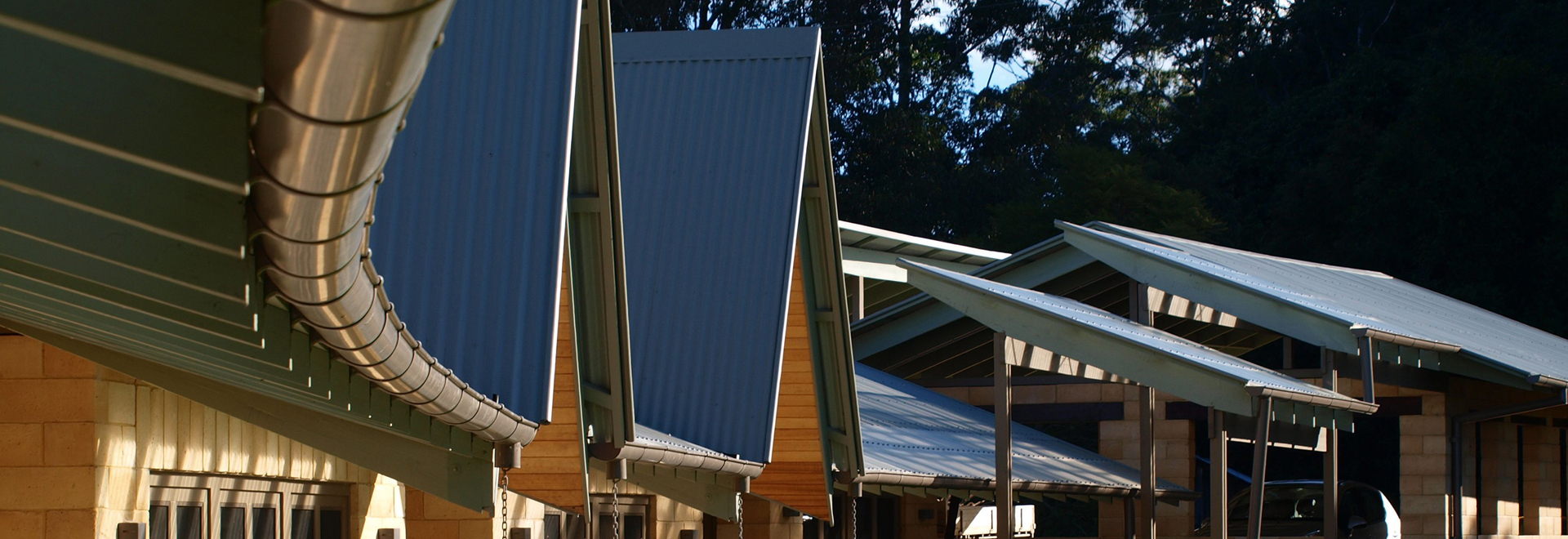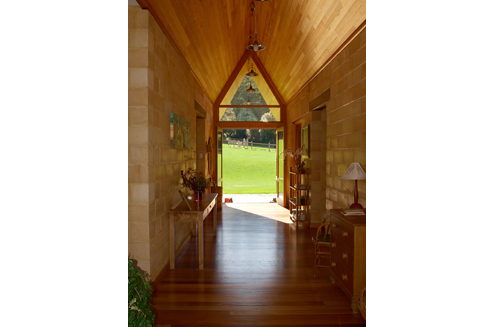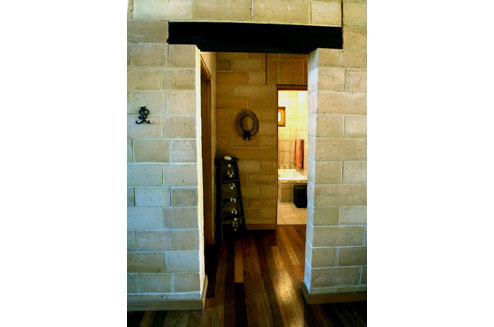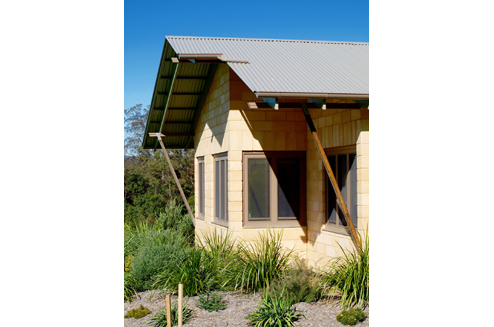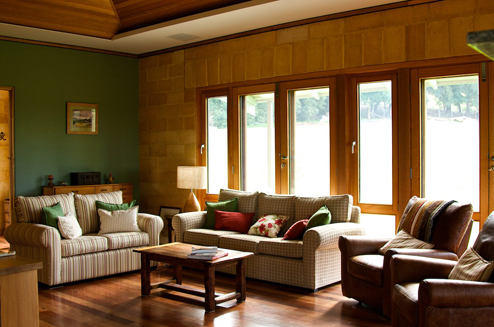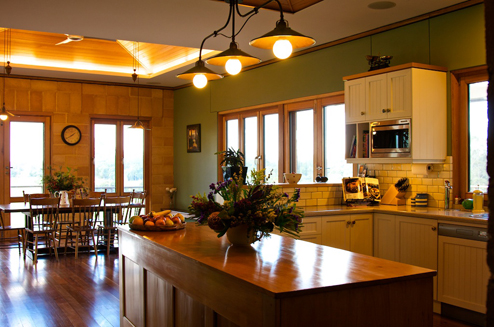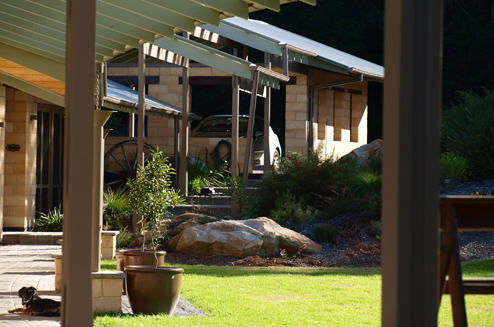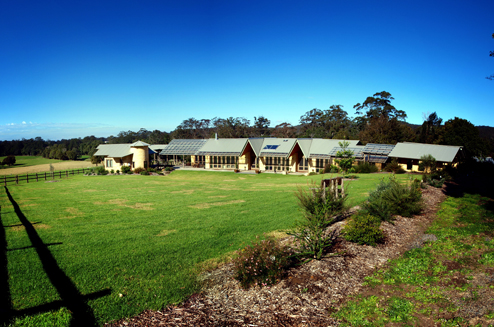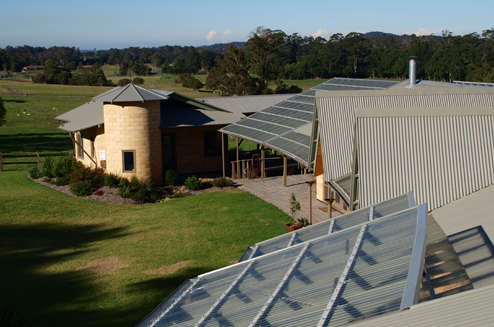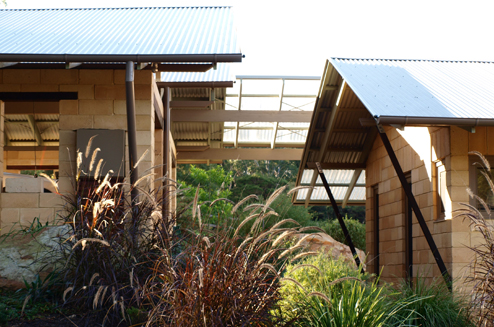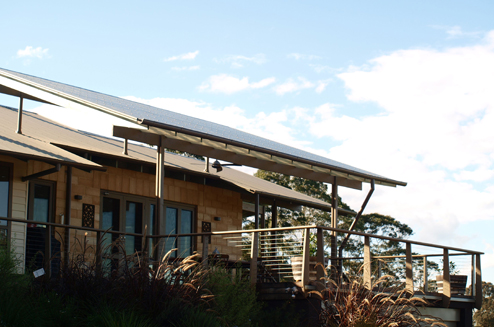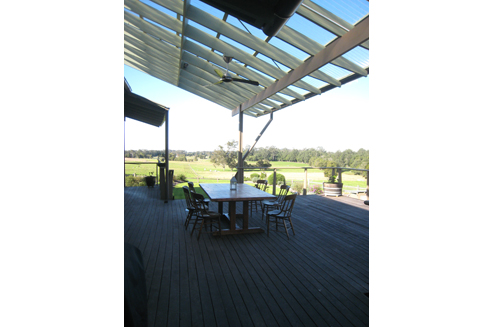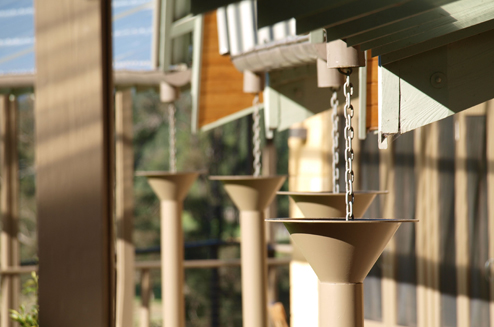Yarrabee
This homestead in the hinterland of NSW Central Coast, looks a lot bigger than its 380m2, thanks to the separate pavilions with connecting roofs, and generous covered outdoor areas. Additional to the family home is guest accommodation, and a corporate headquarters for the farm and the owner’s broader business interests – all expressed in a very detailed design brief.
The house is passively heated and cooled, entirely self sufficient for water and with the PV system to be fitted, for energy as well. A large proportion of the food consumed is also grown on site. Low embodied energy and recycled materials and furniture are used as far as is practical.
See all our Residential DesignsProject Details
The property is comprised of flood plains, south facing sloping paddocks, and some rainforest – all mine subsidence affected, ostensibly precluding high thermal mass construction. But Envirotecture persisted with a highly technical design solution that enabled us to build what we are advised is the first high thermal mass full masonry building in a mine subsidence site since the new rules were introduced several decades ago.
The arced floorplan is slung like a cradle from a north focal point up the slope, where a Euc. Grandis (tallest tree in NSW and a local species) has been planted as a long term ‘lynch pin’. The radians of the floorplan spring from this point. The south facing site is thus balanced by the space ‘cradled’ on the north side of the plan.
The northern aspect is then a mix of sun and light and a short view upslope to the rainforest verge of the Watagan Plateau. The east and south aspect is the longer view to the creek below and the coastal plain to the east. West aspect is limited, but oblique glimpses are given up the Yarramalong Valley.
The mine subsidence criteria required that the building be broken up into small independently founded pavilions. The foundations are massive concrete pads sitting below and disconnected from the slabs, which can then be jacked up in the event of future subsidence. The twin foyers provide lightweight flexible connections between the separate slabs on each side – thus their cross-pitched roofs.
Each pavilion is transparent from north to south, providing free physical access, views to the creek below, and through breezes – important in the humid summer evenings.
The pavilions are linked by large overhang roofs, which also create the seasonally variable outdoor living areas. Deep overhangs are roofed in a controlled mix of solid and clear roofing to ensure correct insolation of the thermal mass.
The floor slab is covered with a recycled ironbark floor which is thermally connected to the slabs and ground below (this is called ‘ground-mass connectivity’). Walls are constructed with Timbercrete blocks – a mix of sawdust waste, sand and a small amount of cement – solid internally, insulated externally. These provide a perfect mix of insulation and thermal mass in a natural low-embodied energy material.
The highly insulated Colorbond roof structure is constructed from low-tech laminated plantation timbers. All glazing is European style tilt & turn casement timber windows, with argon-filled low-e double glazing.
Ceilings were designed to identify each space, even in the open plan living pavilion. They also provide acoustic control, and controlled lighting.
Winner of 2009 HIA AUSTRALIAN CUSTOM BUILT HOME OF THE YEAR,
Winner of 2009 BDA NSW AWARD – HOUSES OVER 450 SQ.M
Winner of 2009 BDA NSW ESD AWARD
Team
Builder: Rustic Touch
Photography by James Clarke

